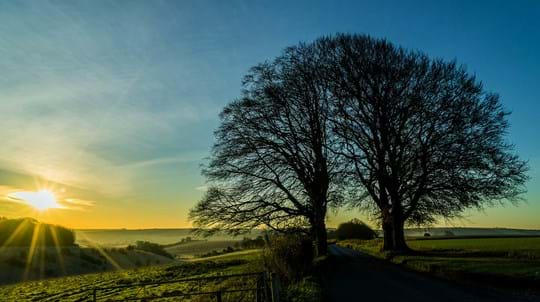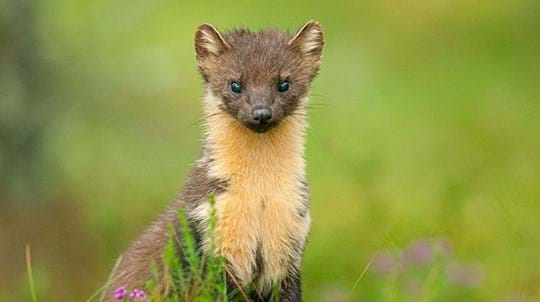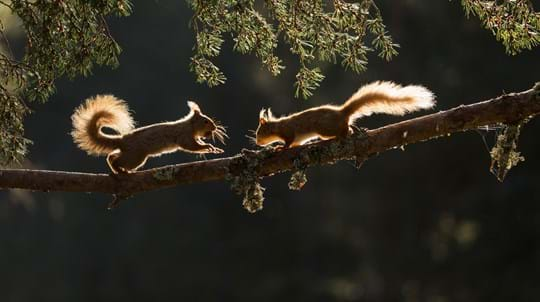
Go exploring
Primordial landscapes, tangled branches, breathtaking wildlife and miles of woodland trails. From the countryside to cities, we care for thousands of woods throughout the UK, all free to visit.
Find a wood near you
Citizen science manager
As part of my PhD, I spent more than 6 months studying the mosses from my research area in Upper Teesdale. I found them fascinating because of their variety of forms and shapes, plus the incredibly different habitats they are found in.
Here are some top facts about moss.
Mosses are distinctive from flowering plants because they produce spores. They have stems and leaves but not true roots. They are reliant on damp conditions for reproduction because the male cells need to move via a film of water to reach the female cells for fertilisation. Sometimes this is within one plant but can also require them to reach another plant, depending on the species.
Mosses are important ecologically as one of the first colonisers of bare ground. They absorb huge quantities of water, helping to soak up rainfall and create a locally humid environment. They also act as an important home for other creatures. These are mainly invertebrates and include species like woodlice and slugs. In my garden, moss is constantly ‘on the move’ as the blackbirds tug it up looking for a tasty meal underneath. Moss is also home to a host of microscopic invertebrates such as rotifers, tardigrades and nematodes.
There are around 1,000 bryophyte species (the term that includes both mosses and liverworts) in the UK. Many require microscopes to distinguish between closely-related species.
Here are some of the more common species of moss that are easy to identify. They can all be found in woodland or growing on tree stumps.
One of the tallest UK mosses, this species can form tufts up to 40cm tall. Found in acidic areas of high rainfall and humidity, such as wet heaths, bogs and moorland and by streams in woodland. To me, each stem looks like a tiny pine tree.
Its long and narrow yellow-green leaves are all curled in the same direction, forming clumps up to 3cm tall. It prefers shaded areas such as banks, ditches, woodland and tree stumps and is found on acidic soils.
This is one of the most common mosses and is especially abundant in woodland. It can be found in clumps up to 4cm-tall growing on tree bases, rotting wood, peat and rock ledges in acidic conditions.
Common on damp ground, trees and rotting wood. It forms yellowish-green or dark green thick mats or tufts. Stems are dark green/black. More commonly found in neutral soils.
Found in woodland, heaths and moors, forming glossy yellowish-green or brownish carpets with red stems. Shoots can be 10cm long or more. Most common on acid soils or leached chalk grassland. This is my favourite moss of all, I love both its Latin and common name and the surprising brightness of the red stems when most of us assume moss is always green.
A common moss, found on damp turf including lawns, in woodland near streams, and marshes, preferring acidic conditions. Red-stemmed with star-like shoot tips. Its alternative common name, ‘electrified cat’s tail moss’ seems very appropriate.
More common in bogs, moors and marshes, but sometimes also appears in damp woodland. There are around 30 different species of sphagnum in the UK.
Peat is formed mainly of sphagnum moss. Peatlands are a unique habitat in their own right and a very important store of carbon. Sphagnum is amazingly absorbent and has antiseptic properties too – in the past it has been used instead of nappies and to dress wounds.

Primordial landscapes, tangled branches, breathtaking wildlife and miles of woodland trails. From the countryside to cities, we care for thousands of woods throughout the UK, all free to visit.
Find a wood near you
Trees woods and wildlife
Everything you need to know about British trees. From identification, folklore and history to the pests and diseases that threaten them.

Trees woods and wildlife
Woods and trees are home to more wildlife than any other landscape, providing homes for thousands of species including our most loved animals.

Blog
Kylie Harrison Mellor • 24 Apr 2019

Blog
Charlotte Varela • 13 May 2025

Blog
Charlotte Varela • 09 May 2019
Blog
Charlotte Varela • 10 Apr 2019